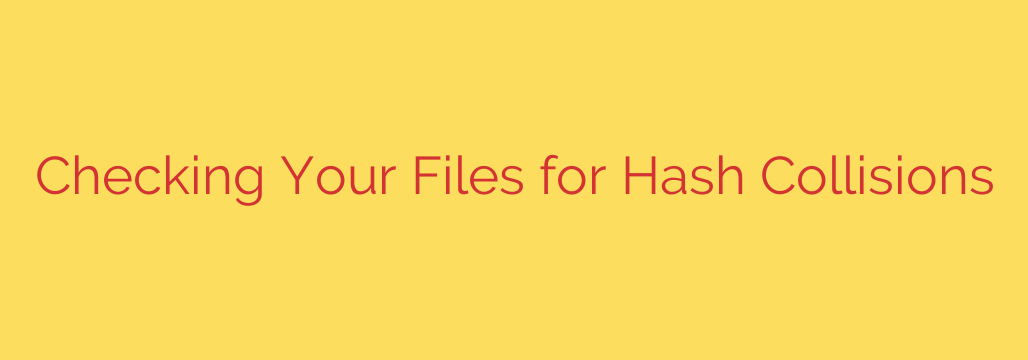
Ensuring the integrity and uniqueness of your digital files is absolutely essential, especially when dealing with large datasets, backups, or version control. A fundamental technique for this is file hashing, where a function processes a file’s content to produce a unique fixed-size string, known as a hash value or checksum. Think of it as a digital fingerprint for your file. If even a single bit changes in the file, the hash value will drastically change.
However, a potential pitfall exists: hash collisions. This occurs when two entirely different files produce the exact same hash value. While designed to be statistically rare with modern, strong hash algorithms, the possibility, however small, is real and can have significant consequences. If you rely solely on hash values for deduplication or verification, a collision means you might mistake two distinct files for identical copies or believe a corrupted file is original, leading to data loss or integrity issues.
Identifying these collisions is a critical step for robust data management. The process typically involves calculating the hash for every file within a specific set or directory and then checking if any hash value is associated with more than one file path. A common and flexible approach involves using programmatic methods. For instance, using a language like Python, you can traverse your file system, compute the hash for each file (using a reliable algorithm like SHA-256, which is far more secure against collisions than older algorithms like MD5 or SHA-1), and store these hash values along with the corresponding file paths. A dictionary structure, mapping hash values to a list of file paths, is highly effective for this. Once hashes for all files are computed and stored, you can iterate through the dictionary, identifying any hash entry that has multiple file paths associated with it. These entries represent potential or confirmed collisions.
While simple duplicate file finders might identify files with the same hash (which are usually identical files), a true collision check specifically looks for the scenario where the hash is the same but the underlying file content is demonstrably different (or at least originates from different file paths, implying different original files). A basic check using file size can be a preliminary step – if file sizes differ but hashes are the same, you have a definite collision involving different content.
Implementing such a check provides a powerful safeguard against unexpected data corruption or misidentification. It’s a best practice for anyone serious about data verification and ensuring that their file collection is genuinely unique and uncompromised. Proactively checking for collisions ensures the highest level of confidence in your data’s integrity.
Source: https://www.linuxlinks.com/collision-checks-hashes/








